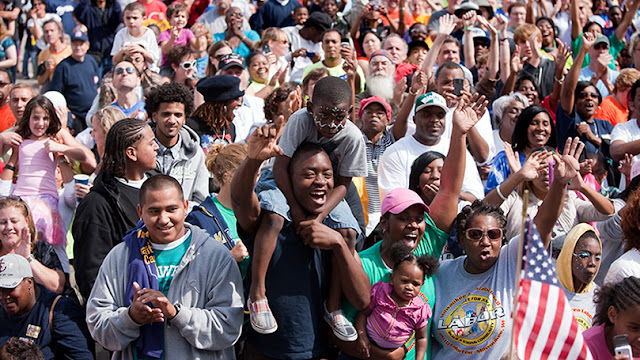One of the things I often think about following an election is how Barack Obama talked about the pundits trying to "slice and dice" the electorate during his 2004 speech at the Democratic Convention. Everyone who has an ax to grind tends to find a way to slice and dice the electorate to confirm their agenda.
But someone who goes by the name Izzy on Twitter sliced the 2020 electorate in a way I haven't seen done before. He looked at how the poorest county in each state voted. Here's what he found:
Those results might surprise some folks. But it clarifies one thing: the poorest counties (as measured by median household income) where a majority of residents are white voted for Donald Trump. Other than in the Northeast, the poorest "blue counties" are where the majority is either African American, Native American or Latino. The one exception I found is Robeson County in North Carolina - which is approximately 1/3 white, 1/3 Native, and 1/3 African American - and has a fascinating history.
As far as I can tell, all of the poorest counties are in rural areas. In states like Montana, North Dakota, South Dakota, and Wisconsin, they are Indian reservations. In Arizona, New Mexico and Texas, they are majority Latino. In Arkansas, Louisiana, Mississippi, Alabama, Georgia and South Carolina, the poorest counties are majority African American. In the red areas across the middle of the country, the poorest counties are primarily rural white.
What this tells us is that, among the poorest counties in the U.S., the divide is primarily based on race.
But there's something that a map like this obscures. We could pick any state to demonstrate, but since all eyes in the political world are on this one right now, let's do Georgia. The poorest county in that state is Clay, where the total population is 2,848. By comparison, the population of the city of Atlanta is 496,480. With a poverty rate of 18%, almost 90,000 people in Atlanta live in poverty - which is over 30 times the entire population of Clay County.
To demonstrate that's no fluke, let's take a look at a very rural state - South Dakota. The population of its poorest county, Todd, is 9,319. But South Dakota's largest city is Sioux Falls, where almost 18,000 people live in poverty - twice the population of Todd.
Just to take things one step farther, there are almost as many people living in poverty in the richest county in Texas (Rockwall, a suburb of Dallas) as there are in the poorest county in the state, 5,500:6,000.
Those kinds of numbers are important to keep in mind as the media (and some pundits) feed us stories about how the so-called "elite" in major metropolitan areas voted. In major cities/metropolitan areas, a data point like "median income" is meaningless given the diversity that often spans from uber-wealthy to extreme poverty.






No comments:
Post a Comment